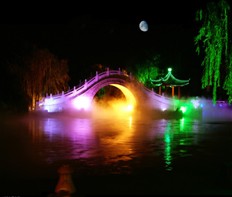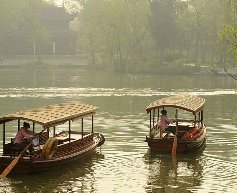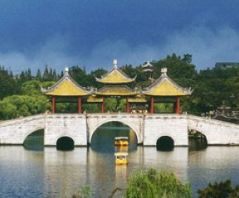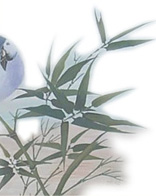|
 Listen to Shirley Singing the Poem in Chinese in the USA Feb 29 2014 Listen to Shirley Singing the Poem in Chinese in the USA Feb 29 2014
 Listen to Shirley Singing the Poem in Chinese & in English in the USA Feb 29,2014 Listen to Shirley Singing the Poem in Chinese & in English in the USA Feb 29,2014
 Listen to Shirley Singing the Poem in English in the USA Jan 29,2014 Listen to Shirley Singing the Poem in English in the USA Jan 29,2014
 Listen to Shirley Singing the Poem in English & in Chinese in the USA Jan 29,2014 Listen to Shirley Singing the Poem in English & in Chinese in the USA Jan 29,2014
 Listen to Shirley Explaining the Poem Listen to Shirley Explaining the Poem
 Follow Shirley to Read the New Chinese Charaters & the Poem Follow Shirley to Read the New Chinese Charaters & the Poem
 Learn the Poem with Shirley Together Learn the Poem with Shirley Together
 See Shirley Created 11st Painting for the Poem Feb 26-29,2016 See Shirley Created 11st Painting for the Poem Feb 26-29,2016
 See Shirley Created 10th Paintings for the Poem Jan 30, 2014 in the USA See Shirley Created 10th Paintings for the Poem Jan 30, 2014 in the USA
 See Shirley Created 9thPaintings for the Poem Oct 2, 2010 See Shirley Created 9thPaintings for the Poem Oct 2, 2010
 See Shirley Created 1st Picture for the Poem Sep 9, 2007 See Shirley Created 1st Picture for the Poem Sep 9, 2007
 The Main Meaning of the Poem and the Lyrics of the Song in English The Main Meaning of the Poem and the Lyrics of the Song in English
The green mountains are indistinct, the water is flowing to the far away.
The fall ends in the Jiangnan, the grass is not wither yet.
The twenty-four bridges are bathed in bright moonlight,
Where are you teaching the beauty to play the vertical bamboo flute?
( Whether you are still listening to the beauty playing the vertical bamboo flute?)
Original Poem, Lyrics of the Song in Chinese and Pronunciations
You can click on any Chinese Character to open the New Character Board and see its Chinese pinyin, meaning, pronunciation and follow me to read it, you can also click on the links to enter the Painting Column, to see more paintings and art notes that I wrote for the poem.
еѓДжЙђеЈЮйЯ©зї∞еИ§еЃШ--Ji Yangzhou Haichuo Paiguang
жЭЬзЙІ -- Du Mu (803-852)
еФР -- Tang Dynasty (618-907)
йЭТе±±йЪРйЪРж∞іињҐињҐ--qƒЂngshƒБn y«Рny«Рn shu«Р ti√°oti√°oпЉМ
зІЛе∞љж±ЯеНЧиНЙжЬ™еЗЛ--qƒЂuj√ђn jiƒБngn√°n c«Оo w√®i diƒБoгАВ
дЇМеНБеЫЫж°•жШОжЬИе§Ь--ƒЫrsh√≠s√ђ qi√°o m√≠ngyu√® y√®пЉМ
зОЙдЇЇдљХе§ДжХЩеРєзЃЂ--y√єr√©n h√©ch√є ji√†o chuƒЂxiƒБoгАВ
About the Author of the Poem
Du Mu (803-852) was one of the most important representative poets in the later period of the Tang Dynasty(618 -907).
Du Mu was from a very rich family and he started to learn the Classical Confucian theory from he was very young. He cared for the society progress and country's fate, and he wanted to help the poor people. But, his career was not very smooth, except being a prefectural governor, he had been a brainman for most of his life, so, he spent much of his time on literature writing.
 He made much high accomplishment on many sides. Poetry is the most famous part -- especially on Jue Ju. He has a same reputation as Li Shangyin, to be called "Little Li Du" (The big вАЬLi DuвАЭ is Li Ai and Du Fu) in Chinese poetry history. About 450 poems and essays of him are existing in the world. He made much high accomplishment on many sides. Poetry is the most famous part -- especially on Jue Ju. He has a same reputation as Li Shangyin, to be called "Little Li Du" (The big вАЬLi DuвАЭ is Li Ai and Du Fu) in Chinese poetry history. About 450 poems and essays of him are existing in the world.
This poem was written after Du Mu became the imperial supervisor in the capital of Tang Dynasty from the office of the Huainan Military Governorship, maybe at the fall in 835 or 836.
Yangzhou is a city of east-central China on the Grand Canal in Jiangsu province. It has a very advanced commerce since ancient time. In the Tang Dynasty, it was a flourishing metropolis in the lower reaches of the Yangtze River. A lot of poets have left many poets for it. This poem in a melodious stone and beautiful art conception, has been read with admiration by people for all ages...
This poem was written to a friend of Du Mu names Han Chuo. Du Mu wrote another poem for him one names " Crying for Han Chuo" after Han was dead, it seems like both of them had a deep friendship.
Enjoy this Poem
The first line: йЭТе±±йЪРйЪРж∞іињҐињҐ qƒЂngshƒБn y«Рny«Рn shu«Р ti√°oti√°o. йЭТе±± qƒЂngshƒБn - Means: green mountain.йЭТmeans: qƒЂng, е±± shƒБn means: mountain. йЪРйЪР y«Рny«Рn - means: indistinct; faint. ж∞і shu«Рmeans: water, river. 蜥蜥 ti√°oti√°o means: far away, remote.
This line means: The green mountains are indistinct, the water is flowing to far away.
The second line: зІЛе∞љж±ЯеНЧиНЙжЬ™еЗЛ qƒЂuj√ђn jiƒБngn√°n c«Оo w√®i diƒБo. зІЛqƒЂu means: fall, autumn. е∞љ j√ђn means: finish, end. ж±ЯеНЧjiƒБngn√°n means: the regions south of the Yangtze River; the lower reaches of the Yangtze River, so, in fact, Yangzhou is not on the Northern Bank of the Yangtze River. иНЙ c«Оo means: grass. жЬ™ w√®i means: no, not, do not. еЗЛ diƒБo means wither.
This line means : The fall/ autumn has ended in Jiangnan, the grass is not wither yet.
The first two lines use " a telephoto lens" , "draw out" a beautiful but far away view of Jiannan. There are green mountains, blue rivers, lightly autumn wind, and the waved grass in the wind... But they are йЪРйЪР y«Рny«Рn and 蜥蜥 ti√°oti√°o, all of them are so far away in the imagination of the poet, they are just a far-off recalling about Jiannan that poet had lived and worked.
With the short 14 words, painted out a big background and basic color tone and the content keynote of the poem: Miss the green and beautiful view in the far away Jiangnan and the old friend there with the soft feeling as water in the region of rivers and lakes.
The third line: дЇМеНБеЫЫж°•жШОжЬИе§Ь ƒЫrsh√≠s√ђqi√°o m√≠ngyu√®y√®
дЇМеНБеЫЫж°• ƒЫrsh√≠s√ђqi√°o means: twenty four bridges or Twenty-Four Bridge. дЇМеНБеЫЫ ƒЫrsh√≠s√ђmeans: twenty four.ж°•qi√°o means: bridge. жШОжЬИ m√≠ngyu√®means: bright moon, bright moonlight. е§Ь y√®means: night.
 This line means: The twenty four bridges are bathed in bright moonlight. Or the Twenty-four Bridge is bathed in the bright moonlight. This line means: The twenty four bridges are bathed in bright moonlight. Or the Twenty-four Bridge is bathed in the bright moonlight.
Why?
According to the recordation in the "Yangzhou Hua Fang Lu"by Li Dou in Qing Dynasty (1644 - 1912), the twenty -four bridge was just the Wujia Brick Bridge, another name was Hong Yao Bridge, because in the ancient time, 24 pretty girls had played the vertical bamboo flutes by the bridge, therefore, it was called "Twenty - Four bridge."
According to the other recordation in the Men Xi Bi Tan by Shen Kuo пЉИ1031-1095пЉЙin Song Dynasty (960 -- 1279),there were 24 bridges in Yangzhou.
Since Du Mu lived in Tang Dynasty (618 - 907), his times was near the Song Dynasty (960 - 1279), so, I would like to explain this poem according to this record. Also I feel the last line is also near the meaning of the third line.
So, this line means: The twenty four bridges are bathed in bright moonlight.
Compare with the first two lines, it is a medium close shot to write so many bridges are covered in the bright moonlight.
From the first line until now, this poem is still writing view, but the lens has from the far away to the medium.
The the last line: зОЙдЇЇдљХе§ДжХЩеРєзЃЂ y√єr√©n h√©ch√є ji√†o chuƒЂxiƒБo. зОЙдЇЇ y√єr√©n means: personable person, pretty person or beauty. It can be pointed to the local pretty girls, the friend of the poet in the poem and also it can be pointed the beautiful girl as the princess Nong Yu. жХЩji√†o has two meanings: teach or be asked or be ordered. You can use the meaning rely on your understanding of you to this poem.
This line means: Where (On which bridge) are you (as Xiao Shi) teaching the beauty as the princess Nong Yu to play the vertical bamboo flute?
or:
 Where are you asking / ordering the female Singer to play the vertical bamboo flute? Where are you asking / ordering the female Singer to play the vertical bamboo flute?
This is a feature, via a question, writes out the figures in music, points out the theme of missing the friends in the far ways Jiangnan.
Now the beautiful views in the over 3 lines have been matched by the music of vertical bamboo flute, it can attractive the phoenix and it will be left in the heart of the poet forever...
Inspiration
Since I first time read this poem, I have been enjoying it and I had written comments, created more than 10 paintings and a piece of music to match the paintings 2005 - 2010. Also I had sung it more than 30 times included to sing it in the Eastern Kentucky Broadcasting Station. However, until tonight, after I completed to re-write the comment for the second volume of my series book: гАКзїЉеРИиЙЇжЬѓж±Йиѓ≠гАЛComprehensive & Artistic Chinese: Together with Me, to Learn Chinese Culture and Language by Enjoying Paintings, Music and Poetry, just I feel I have really started to understand it.
I do feel:
1. A classic cannot be totally understood by studied just once or twice. Many allusions are hidden in the ancient classics, if we stop after getting a little knowledge about them, then we cannot truly understand the core of truth.
For example, just in this little poem there are at least 2 allusions, about 4 points relate to the history records and 2 Chinese idiom: such as:
The idiom: дєШйЊЩењЂе©њ пљГпљИ√©пљО…°пљМ√≥пљО…°пљЛпљХ√†пљЙпљШ√є - a handsome son-in-law, or a son-in-law of high rank is just from the story of Xiao Shi.
The idiom: еЉДзОЙеРєзЃЂ n√≤ng y√єchuƒЂxiƒБo -- compared to a man and a female are merry and become lovers and share a happy life together.
The stories before дЇМеНБеЫЫж°• ƒЫrsh√≠s√ђqi√°o, зОЙдЇЇ y√єr√©n жХЩеРєзЃЂji√†o chuƒЂxiƒБo and so on.
There are many explanations about this poem according to the recordationвАЩs in Ming Dynasty (1368 - 1644) or Qing Dynasty (1644 - 1912), but this poet and the poem were lived and be written in Tang Dynasty (618 - 907). Even thought many of the explanations according to the history record, but it has been the second data already.
So, if we did not spend much time and energy to dig the history as early as possible, we would make some mistakes because of our ignorance or we would not be able to find the knowledge and true meaning behind these classics we are working on. The result would be : we ourselves to make mistakes and then to mislead the others.
When I write here, just I realize why many Christians study Bible for whole of their lives instead of just reading once or twice. Because, Bible is just a classic. Right?
2. On writing, this poem expresses the feeling of the poet in the process of writing view, both of them are combined together harmoniously and creates a wonderful artistic conception with pictures, music and figure. Fro example, it writes view from far away, to middle to near; from big landscape, to the middle scenery, until a point to write the "hero". All of the ideas and the theme is hidden in the view and be expressed naturally and artistically.
3. To use the classical allusion skillfully, different people can see it from different standpoints, their own interest in every case directing their judgment.
How do you think of this poem? What have you learned from it?
 If you have any questions, comments and suggestions, please write to shirley@ebridge.cn ; you are welcome to publish your opinions in Message Board as well. If you have any questions, comments and suggestions, please write to shirley@ebridge.cn ; you are welcome to publish your opinions in Message Board as well.
Shirley Yiping Zhang
Wrote, Painted, Translated, Sang & Recorded the Content Feb 29, 2016 in China / Jan 31, 2014, in the USA / Dec 25, 2005 in China
|

